Genre: Simulation Developer: KOEI Publisher: KOEI Players: 1-2 Released: 1993
As America recently celebrated its anniversary, my curiosity drove me to check out the one Genesis game I can think of that simulates the war that gave birth to the country. Taking its name from Patrick Henry’s famous speech, Koei’s Liberty or Death is a strategic simulation title that allows players to either play as the Continental Army seeking independence or as the British Empire, striving to quell the rebellion spreading throughout its upstart North American colonies. After spending a lot of time with it, it’s readily apparent why Liberty or Death is the only one of its kind on the console. I think other developers saw this game and ran away, terribly intimidated by the incredible depth and scope that it delivers.
This is no understatement, mind you. Liberty or Death is an overwhelmingly deep and intricate simulation. I’m talking about the kind of game that most people shudder over just by reading the back of the box. If ever anyone wanted a simulation to be true to its source material, then this is the game for them. It’s is so complex as to border on ridiculous. For instance, the manual is over 80 pages long! It reminds me of Might & Magic: Gates to Another World and Starflight, but in fairness, neither of those titles were as complex as this.
Unlike the PC version, where a total of six commanders-in-chiefs are available, only George Washington (‘Murica) and Thomas Gage (England) are selectable. Regardless of which is chosen, players can choose to play alone against the computer, face off against a friend, or let the computer battle itself. The monthly war budget is determined by the Continental Congress or British Parliament, which meets quarterly to determine how much money they are going to allocate for the conflict. From the outset, both sides have their advantages and disadvantages. For instance, the Continental Army has less money and armament, but its commanders are superior and its soldiers are better trained. In contrast, the Redcoats have more money, naval superiority, and control of areas from Canada to Georgia, but fewer of their commanders are as effective and their soldiers aren’t as battle-hardened. Commanders on both sides must keep their troops fed, armed, and trained, or morale will fall. Moreover, the people of each district must be kept content, or they won’t support the war effort. Gazettes and parades are tools that will help to maintain public opinion.
The traditional Koei political intrigue is also present. In addition to the changing seasons, players will have to contend with betrayal, spies, maintaining alliances, foreign involvement in the struggle, etc. The number of factors that can influence the war effort is staggering, and players can literally invest tens, if not hundreds of hours in the game only to have something as unexpected as the changing loyalty of German mercenaries cost them the war. Another threat to the campaign is the vote of confidence that takes place every three months. If the Continental Congress or British Parliament does not vote to support the player, the game is over. These votes are unavoidable. Winning battles, personal interactions, and colony approval level all influence the vote, so maintaining relationships and public and military support are vital.
The gameplay in Liberty or Death is similar to that of Genghis Khan II, which isn’t surprising, since they share the same producer, Kou Shibusawa. This game is a lot smoother and pleasant-looking, but the music isn’t quite as good. I would have liked a better soundtrack to accompany the neat little screens that appear whenever troops train, people gather around the gazette, or ships sail. Thankfully, the user interface is very clean, both in the map and battle screens. This makes transitioning from one to the other very easy. There are four different types of troops: infantry, cavalry, guerrilla, and artillery. Each type has its strengths and weaknesses. This means that players have to think hard about which troops to commit to combat. For example, cavalry can go through forests, and guerrillas can traverse mountains. Infantry can’t pass through these terrains, but they can perform a bloody bayonet charge when low on ammunition.
Unfortunately, the battles aren’t very exciting. When regiments enter enemy territory, the map changes to the battlefield. Troops are represented by the typical tiny characters these types of games are prone to use, and positioning them doesn’t do much to get the blood flowing. The animated and changing characters in Dark Wizard were much more pleasing to the eye, but at least here there’s a strategic element that Sega CD classic lacked. I also didn’t like that one doesn’t have direct control over the navy. I wanted to engage in fierce sea battles!
It all seems a bit too much sometimes, doesn’t it? Thankfully, the game has a save feature. The sheer amount of territory to be fought over here makes that a vital feature, and this is definitely one war that will not be won in a single sitting. I suggest shutting off the battle and scene animations and sticking to the maps. Yes, it won’t be as pretty to look at, but it makes the game move much more quickly. Also, feel no shame in using a FAQ. Most people wouldn’t get past the budget allocation section without it, and the manual isn’t always very helpful. This guide is particularly good.
Overall, I have to say that despite the immense learning curve and droning music, I enjoyed Liberty or Death. This is the type of game to spend a rainy afternoon with (or a rainy season), and it’s actually a bit addictive once things start to flow. I do wish the soundtrack were better, as that would really help the mood, but it’s not a deal-breaker. Gamers looking for a solid and engaging simulation title should definitely give this one a chance. An empty schedule and a music playlist are recommended, though.
SCORE: 7 out of 10

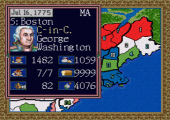
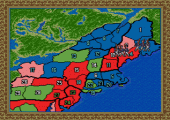
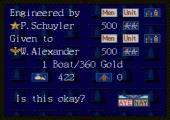
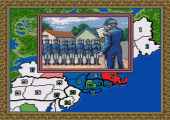
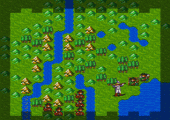
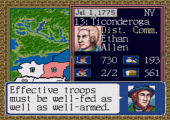
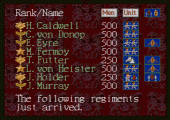
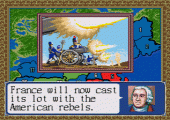

Recent Comments